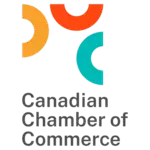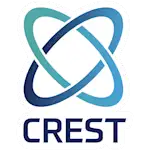Packetlabs: Black Hat USA 2025
Would you like to learn more?
Download our Pentest Sourcing Guide to learn everything you need to know to successfully plan, scope, and execute your penetration testing projects.
Black Hat USA returned to the Mandalay Bay Convention Center in Las Vegas this past week. This six-day affair began with in-depth, hands-on Trainings for cybersecurity professionals (August 2–5)—spanning AI, IoT hacking, malware analysis, and more. These sessions, delivered by top-tier global experts, offered attendees practical skills to strengthen both offensive and defensive capabilities.
On Summit Day, leaders tackled vital issues, from board-level risk governance to AI in finance. Briefings followed on August 6–7, spotlighting top-tier security research, demonstrations, and advanced exploit discussions, and nearly 115 tool demos filled the popular Arsenal section, enabling attendees to interact with real-world open-source tools. Those who were unable to attend live debates can access video content starting August 15.
Keynotes: Thought Leadership & National Insight
Black Hat 2025 featured impactful keynote addresses from cybersecurity luminaries—Mikko Hyppönen reflected on the evolution of cyber defense across decades, while Ron Deibert from the Citizen Lab dove into counter-intelligence scenarios. Former NSA director Chris Inglis shared a poetic and strategic perspective on technological transformation, and CISA’s Madhu Gottumukkala bridged the intersection between infrastructure resilience and national readiness.
On the main stage, presentations advanced the shift from attack surface to risk surface management, suggesting the need for Continuous Threat Exposure Management (CTEM). Microsoft leaders unpacked how they stay ahead of elite hacker groups, while Splunk proposed ways to reimagine modern Security Operations Center (SOC) efficiencies.
Strategic, Technical, and Community Engagement
Beyond product reveals, Black Hat’s Business Hall provided access to over 120 sessions, sponsor booths, and interactive zones like Bricks & Picks, Startup Spotlights, and the immersive Drone Zone. Community-driven initiatives like the NOC (Network Operations Center), professional development workshops, and a dedicated tactics zone encouraged collaboration and peer learning.
Summits offered targeted sessions for executives and analysts:
CISO Summit tackled strategic threat intelligence, board-level communication, and risk governance.
AI Summit bridged the dual nature of AI in cyber defense and offense.
Financial Services Summit, Innovation & Investment, and Omdia Analyst Summit provided sector-specific insights and market outlooks.
Top Takeaways for Security Leaders
Business Strategy & Risk Management: Black Hat 2025's transition from attack surface to risk surface management tools and CTEM modelling empowers CISOs to align cybersecurity programs more closely with organizational risk strategies.
AI Integration: With major platforms debuting AI-driven tools for detection, triage, and response, defenders must accelerate integration of AI solutions (and anticipate adversarial use.)
Skill Building and Research: Trainings, Arsenal demos, and tool discovery opportunities underscore the importance of hands-on capabilities and staying abreast of cutting-edge security techniques.
Public-Private Dynamics: Nakasone’s insight—and government disengagement—should galvanize renewed efforts to preserve cross-sector collaboration in defending critical national infrastructure.
Conclusion
Black Hat USA 2025 showcased how industry and community must unite to outpace adversaries. From intelligence automation to hardware exploit research, the conference delivered the forward-looking insights that security teams need to adapt.
Packetlabs is closely tracking these developments—let us help you translate learnings from Black Hat into proactive risk mitigation strategies, team upskilling, and next-gen threat readiness.
Contact Us
Speak with an Account Executive
Interested in Pentesting?

Penetration Testing Methodology
Our Penetration Security Testing methodology is derived from the SANS Pentest Methodology, the MITRE ATT&CK framework, and the NIST SP800-115 to uncover security gaps.
Download Methodology
Pentest Sourcing Guide
Download our Pentest Sourcing Guide to learn everything you need to know to successfully plan, scope, and execute your penetration testing projects.
Download Guide










